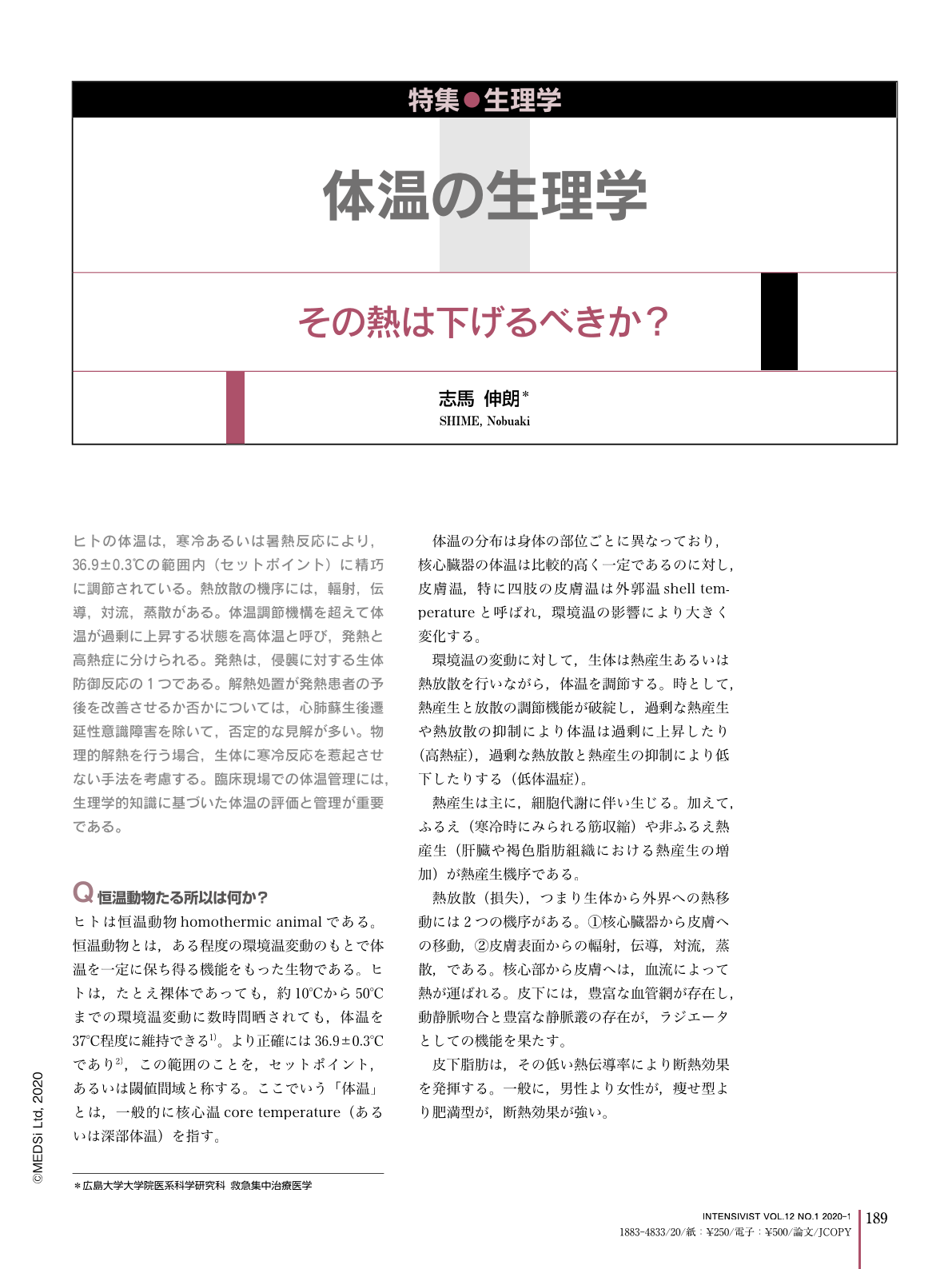Japanese
English
- 有料閲覧
- Abstract 文献概要
- 1ページ目 Look Inside
- 参考文献 Reference
ヒトの体温は,寒冷あるいは暑熱反応により,36.9±0.3℃の範囲内(セットポイント)に精巧に調節されている。熱放散の機序には,輻射,伝導,対流,蒸散がある。体温調節機構を超えて体温が過剰に上昇する状態を高体温と呼び,発熱と高熱症に分けられる。発熱は,侵襲に対する生体防御反応の1つである。解熱処置が発熱患者の予後を改善させるか否かについては,心肺蘇生後遷延性意識障害を除いて,否定的な見解が多い。物理的解熱を行う場合,生体に寒冷反応を惹起させない手法を考慮する。臨床現場での体温管理には,生理学的知識に基づいた体温の評価と管理が重要である。
Human body temperature is titrated within the range of 36.9±0.3℃, called the set point, by cold or hot reactions against changes in environmental temperature. The mechanisms of heat dissipation include radiation, conduction, convection, and transpiration. Elevated body temperature is a state in which the body temperature rises excessively and is divided into fever and hyperthermia. Fever is one of the defense mechanisms against invasive stresses. Antipyretic therapy has failed to improve the outcomes of critically ill, febrile patients, with the exception of those who are unconscious after surviving cardiopulmonary arrest. When treating fever with physical means, suppression of a cold reaction is a prerequisite. Appropriate assessment and intervention based on a physiological rationale is important for the clinical management of body temperature.

Copyright © 2020, MEDICAL SCIENCES INTERNATIONAL, LTD. All rights reserved.


